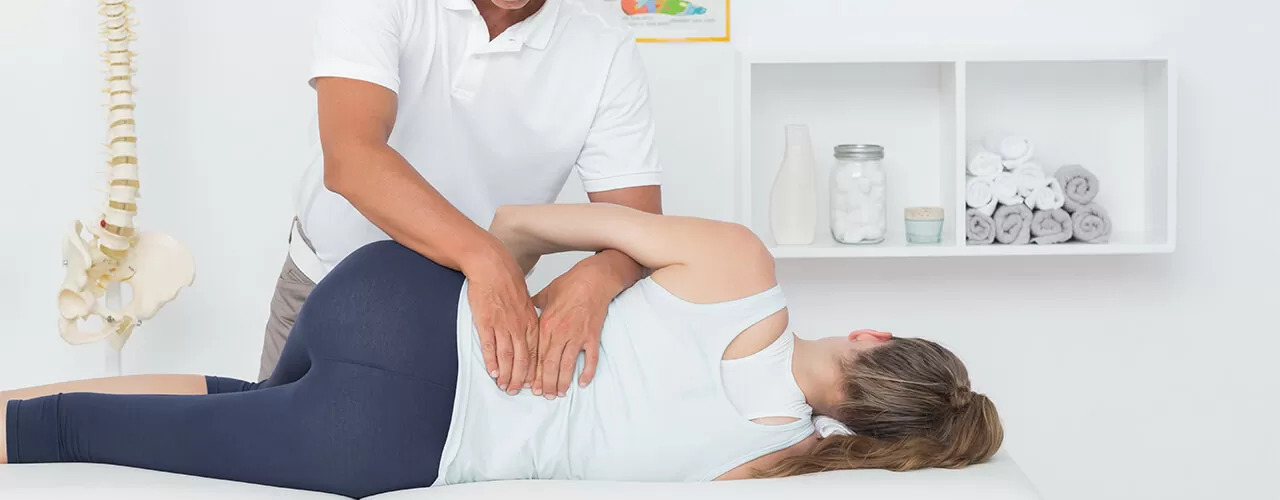One of the most common reasons people visit our physical therapist each day is to get relief from chronic back pain. In fact, it is the most commonly reported source of pain across the nation. While back pain can be caused by a variety of medical conditions, in many cases it is the result of a herniated disc. It is estimated that about 60-80% of people will experience some level of lower back pain in their lives, and many may experience the issue due to a herniated disc.
Herniated discs can occur anywhere along the spine; however, they typically affect the lower back area. Physical therapy patients may also be familiar with other terms used to describe a herniated disc, such as “protruding disc,” “ruptured disc,” or “bulging disc.” Nevertheless, the treatment for a herniated disc remains the same. While they can be very painful our licensed physical therapists can help patients of all ages find fast relief and learn to manage their pain with regular physical therapy appointments.
What are some common symptoms of a herniated disc?
Symptoms associated with a herniated disc may vary, depending on where the injured disc is located. Some of the most common symptoms people experience with a herniated disc include:
- Pain when bending or twisting.
- Pain that intensifies when bending, sitting, coughing, or sneezing.
- Numbness, tingling, or burning in the back, buttock, legs, and/or feet.
- Weakness in the legs.
If you are experiencing any or all of these symptoms, you may have a herniated disc. Fortunately, physical therapy can help relieve pain due to a herniated disc or any other back pain issues. We recommend scheduling a consultation with one of our physical therapists as soon as possible, in order to treat the pain before it intensifies.
Why do herniated discs develop?
Spinal discs are soft and rubbery pads located between the bony vertebrae that help make up the spinal column. They are made of a thick outer ring of cartilage and an inner gel-like substance, designed to work as shock absorbers. Your spinal discs work to allow the back to bend with ease and they help protect your spinal cord and the delicate nerves on your back.
If the cartilage in your spinal disc somehow tears or develops a defect, the inner gel-like substance, also known as the “nucleus,” can breakthrough. This bulging or herniation can then put pressure on the nerves, resulting in intense pain. In fact, even small amounts of pressure on your spinal nerves can cause pain, numbness, or weakness.
Herniated discs in the lower back can be particularly painful because they put pressure on the sciatic nerve, which can result in sciatica. The sciatic nerve is actually made up of several spinal nerve branches that travel from the spine down to the leg. If the sciatic nerve becomes pinched, pain can radiate from the buttocks area, down throughout the back of the leg, and into the shin and foot. Luckily, physical therapy can work to reduce the pain caused by this condition.
When you are young, your spinal discs have a high water content level, made up of almost 80% water. However, as you age, the water content in your spinal discs lowers. This causes the discs to become less pliable, thus increasing the risk of tears or other defects. Some of the other common causes of herniated discs include:
- Traumatic injury.
- Repetitive twisting movements.
- Heavy or incorrect lifting.
- Excessive body weight or obesity.
- High-impact sports.
How Can Physical Therapy Help Lower Back Pain?
Physical therapy is a safe and non-invasive pain treatment option, designed to help patients of all ages heal from the inside out. By using targeted physical therapy treatments, our skilled physical therapists can work to relieve back pain, reduce inflammation, stimulate blood flow, and restore your range of motion.
Call our office today to schedule an appointment with one of our knowledgeable and highly-trained physical therapists, and learn more about how our services can benefit you.

